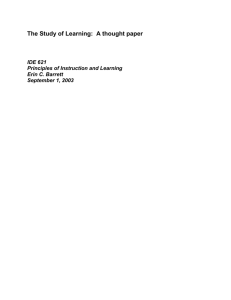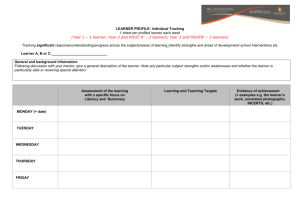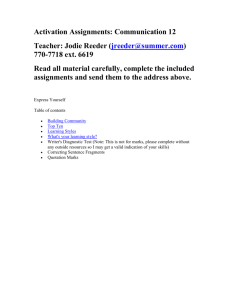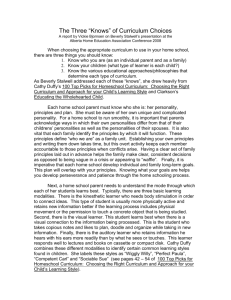- AIM Awards
advertisement
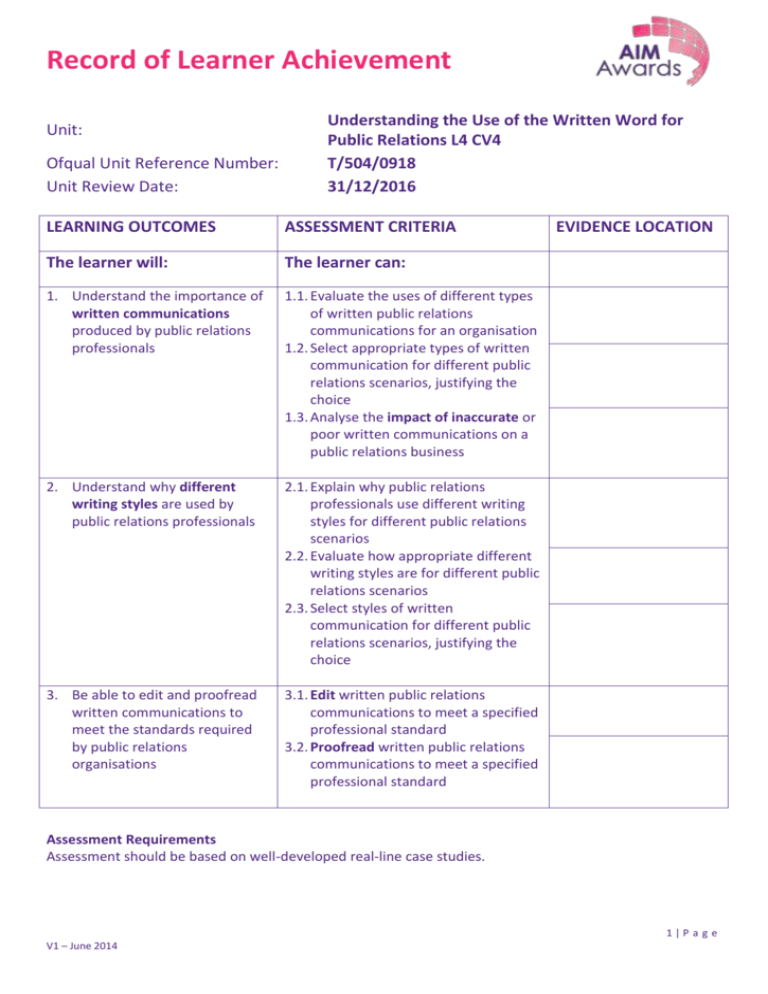
Record of Learner Achievement Unit: Ofqual Unit Reference Number: Unit Review Date: Understanding the Use of the Written Word for Public Relations L4 CV4 T/504/0918 31/12/2016 LEARNING OUTCOMES ASSESSMENT CRITERIA The learner will: The learner can: 1. Understand the importance of written communications produced by public relations professionals 1.1. Evaluate the uses of different types of written public relations communications for an organisation 1.2. Select appropriate types of written communication for different public relations scenarios, justifying the choice 1.3. Analyse the impact of inaccurate or poor written communications on a public relations business 2. Understand why different writing styles are used by public relations professionals 2.1. Explain why public relations professionals use different writing styles for different public relations scenarios 2.2. Evaluate how appropriate different writing styles are for different public relations scenarios 2.3. Select styles of written communication for different public relations scenarios, justifying the choice 3. Be able to edit and proofread written communications to meet the standards required by public relations organisations 3.1. Edit written public relations communications to meet a specified professional standard 3.2. Proofread written public relations communications to meet a specified professional standard EVIDENCE LOCATION Assessment Requirements Assessment should be based on well-developed real-line case studies. 1|P a g e V1 – June 2014 Record of Learner Achievement Learning Outcome 1 Written communications: types of written public relations output, e.g. news releases, briefing documents, précis writing, feature articles, public addresses, web copy, newsletter copy, white papers, reports; reasons for having different types; uses of different types of written public relations communication. 1.3 Impact of inaccurate: organisational and personal reputation; credibility; honesty; legal requirements; clarity of message; correct use of punctuation marks (commas, colons, semicolons, dashes, apostrophes, quotation marks); correct grammar (verb agreement, plurals, accurate spelling, consistent voice, word order, capitalisation, sentence and paragraph construction and development); variations of grammar, e.g. US English. Learning Outcome 2 Different writing styles: types and their uses in written public relations communication, e.g. journalistic, technical, online, marketing-based, client facing; advantages and disadvantages of passive and active voice; meeting different audience needs; tone of voice; clarity of message; use of concise and effective writing; use or non-use of jargon. Learning Outcome 3 3.1 Edit: role of editors and copy-editors; checking accuracy of facts; checking consistency of style, tense and person; check writing meets organisational objectives; check writing meets the requirements of the audience, e.g. length, style, format; check for omissions; remove extraneous information and words; check house style; use of editing marks. 3.2 Proofread: checking final copies (spelling, punctuation, grammar, length of communication); use of proofreading marks. Evidence Requirements Evidence of practical ability must be demonstrated. Final Tutor Feedback (Strengths and Areas for Improvement): 2|P a g e V1 – June 2014 Record of Learner Achievement Learner Submission Disclaimer I declare that this is an original piece of work and that all of the work is my own unless referenced. Assessor Disclaimer I confirm that this learner’s work fully meets all the assessment criteria listed above at the correct level and that any specified evidence requirements have been addressed. Assessor Learner Date 3|P a g e V1 – June 2014





